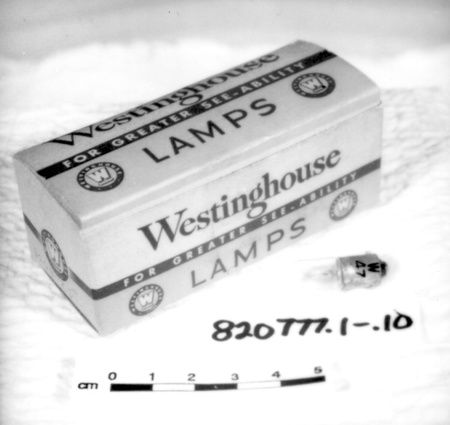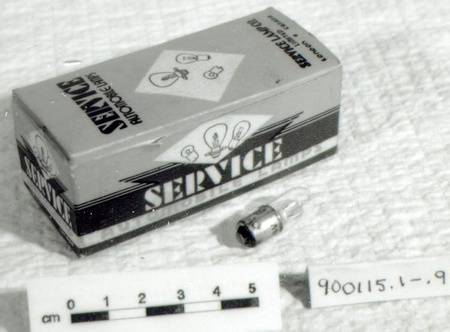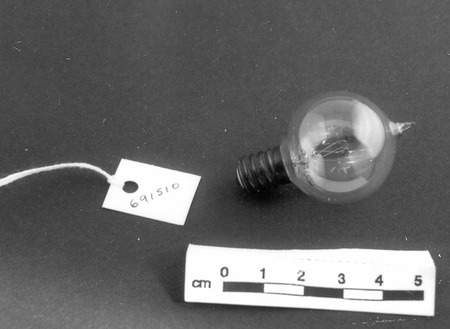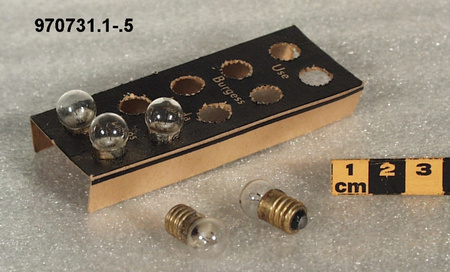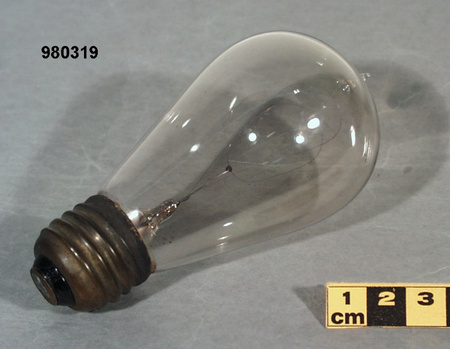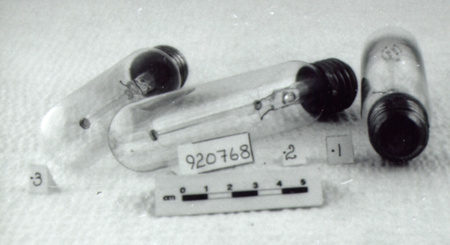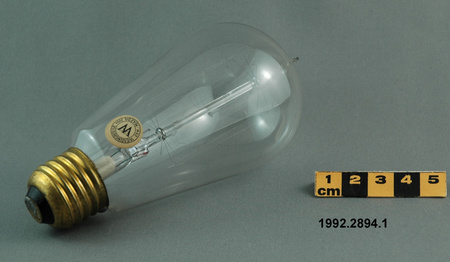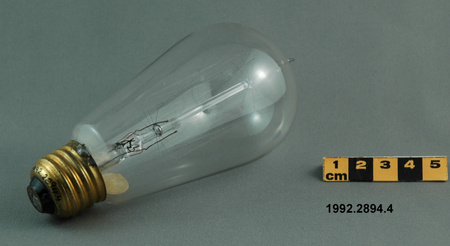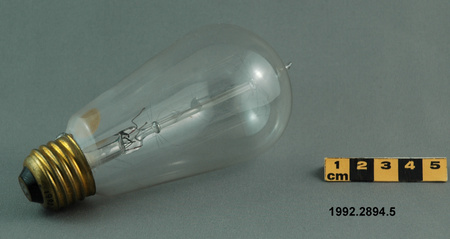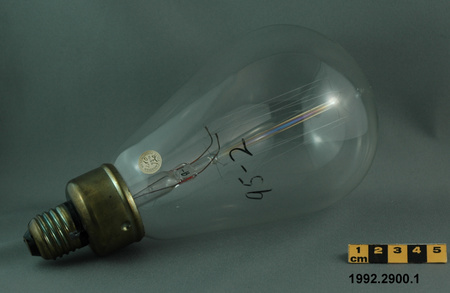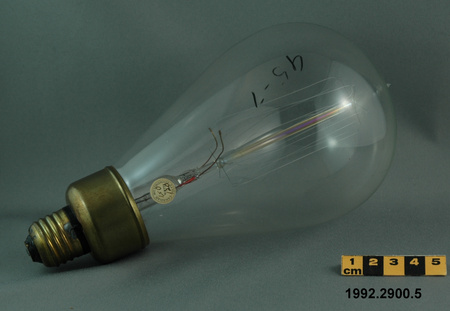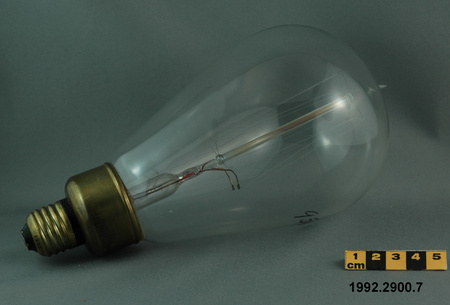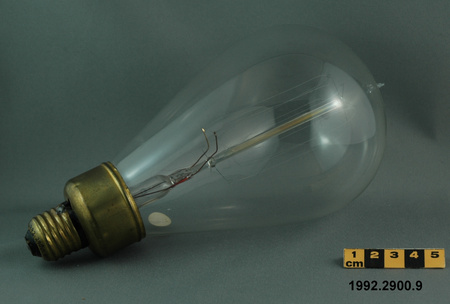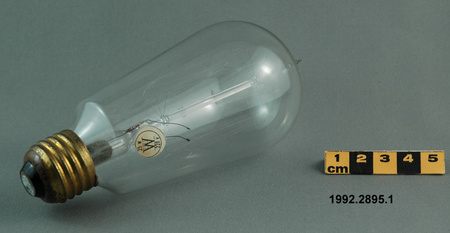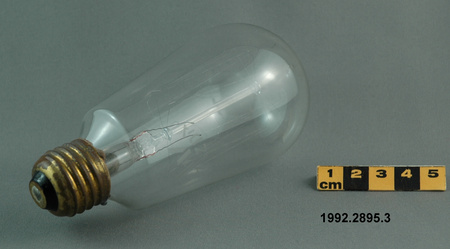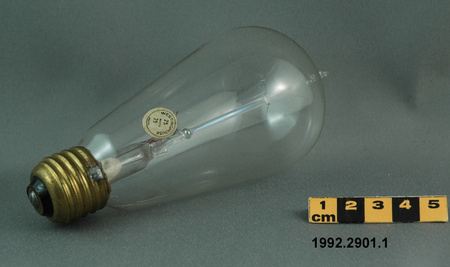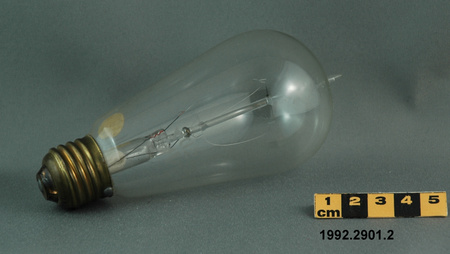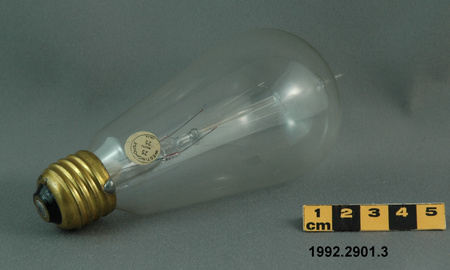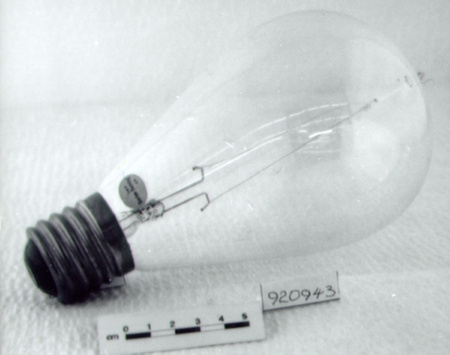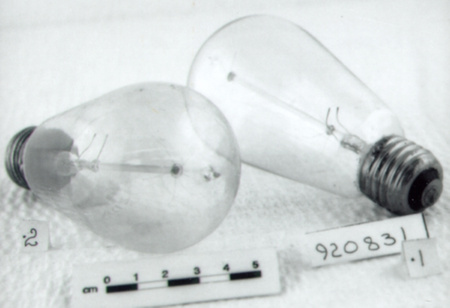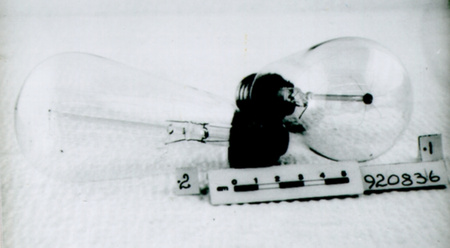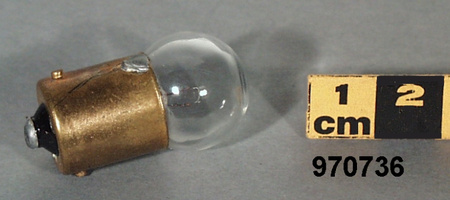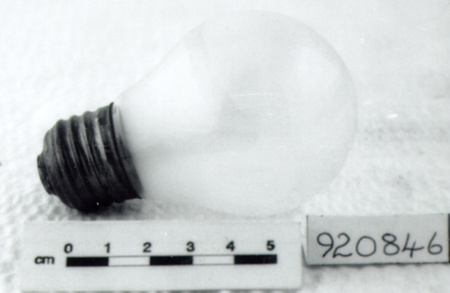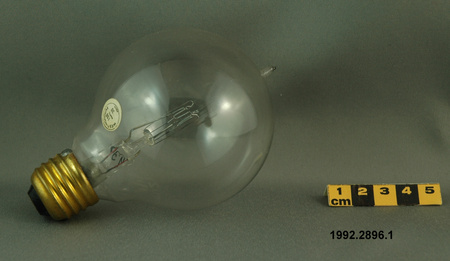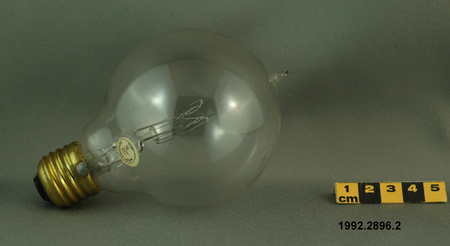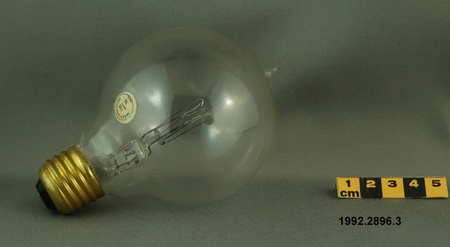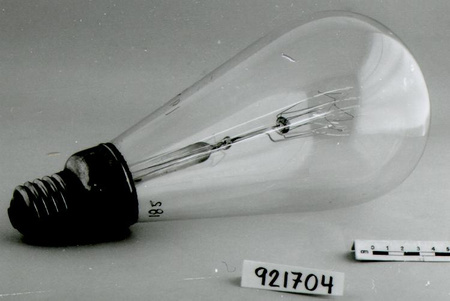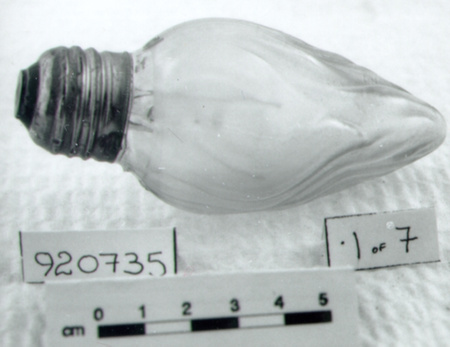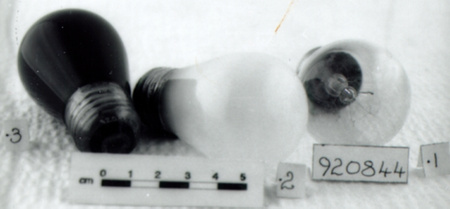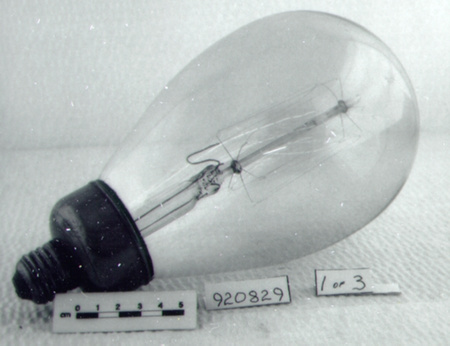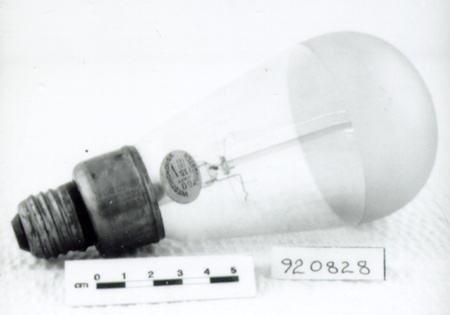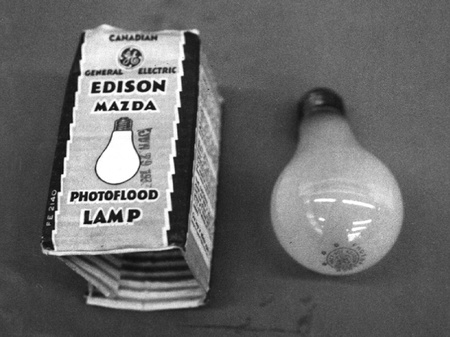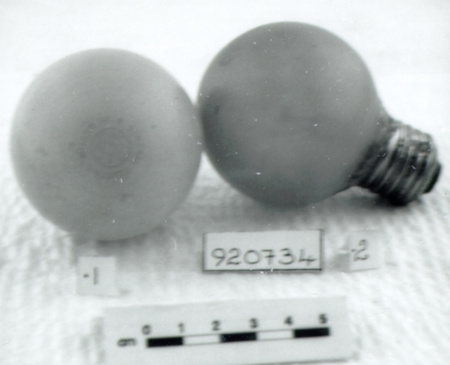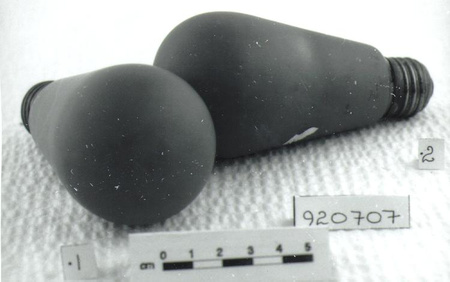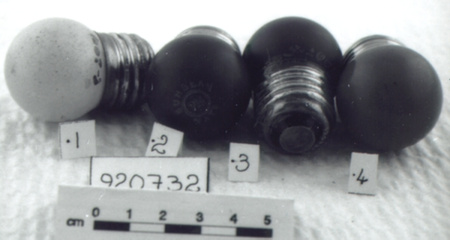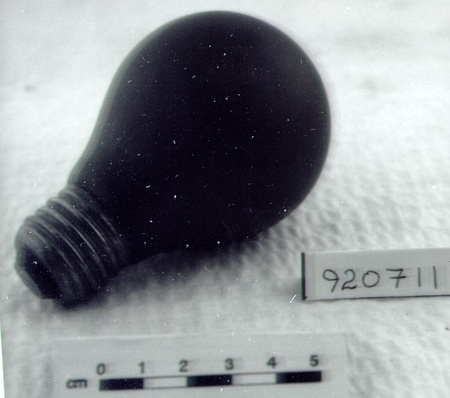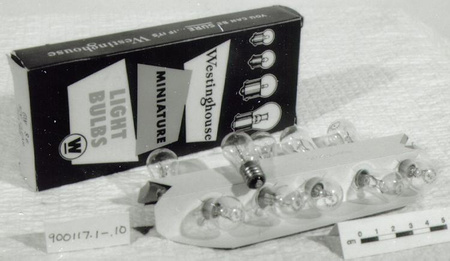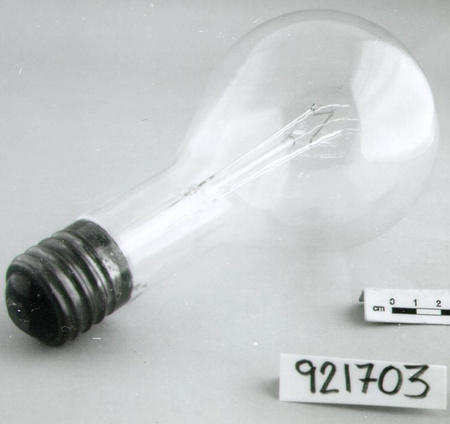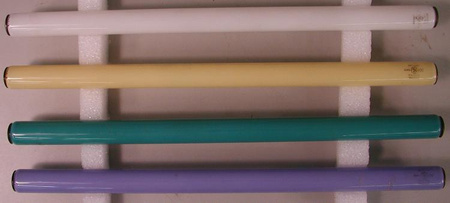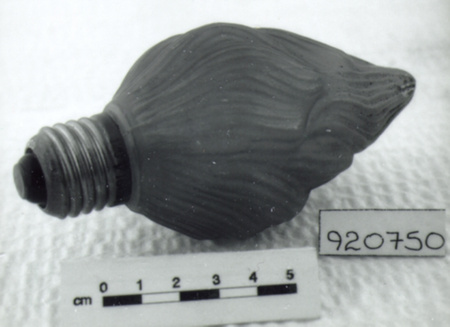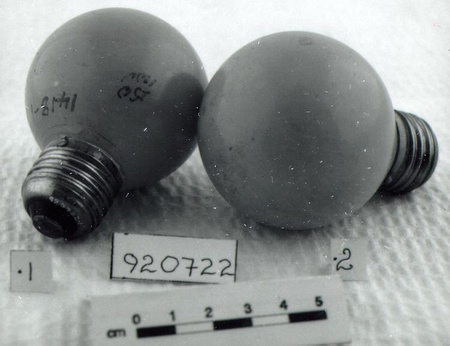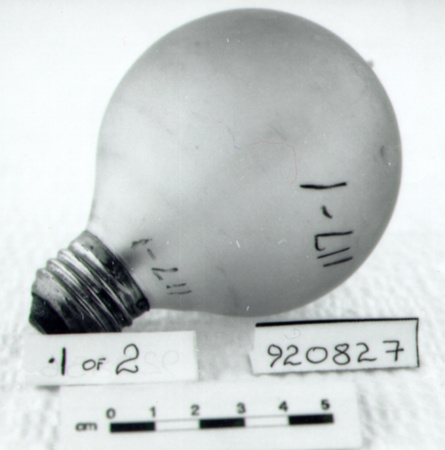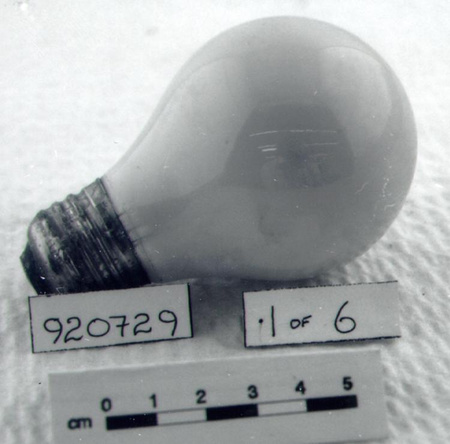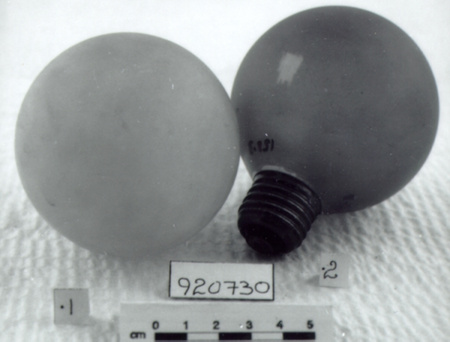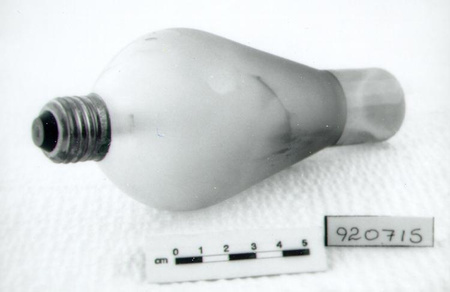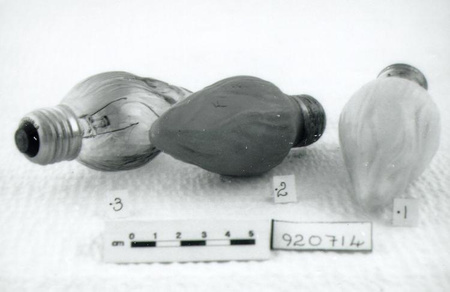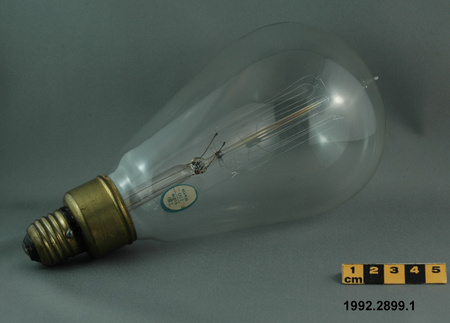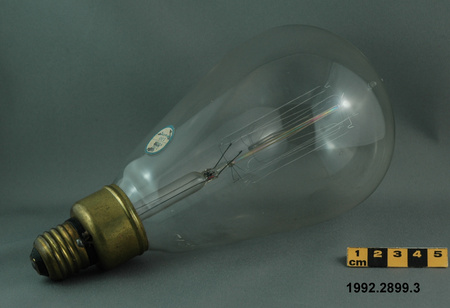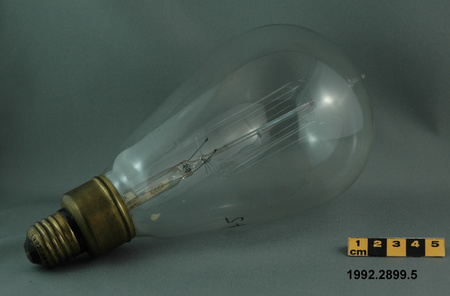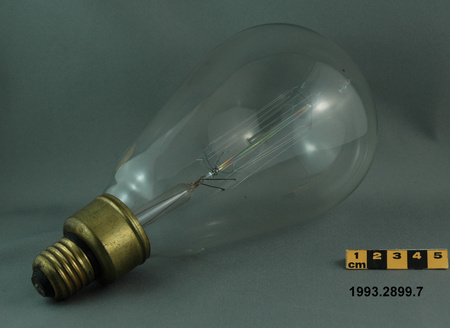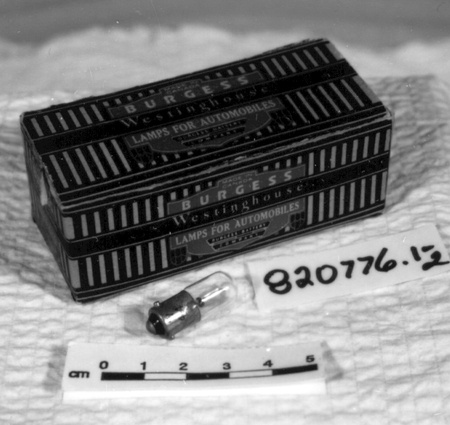Lamp bulb, incandescent
Use this image
Can I reuse this image without permission? Yes
Object images on the Ingenium Collection’s portal have the following Creative Commons license:
Copyright Ingenium / CC BY-NC-ND (Attribution-NonCommercial 4.0 International (CC BY-NC 4.0)
ATTRIBUTE THIS IMAGE
Ingenium,
1982.0776.001
Permalink:
Ingenium is releasing this image under the Creative Commons licensing framework, and encourages downloading and reuse for non-commercial purposes. Please acknowledge Ingenium and cite the artifact number.
DOWNLOAD IMAGEPURCHASE THIS IMAGE
This image is free for non-commercial use.
For commercial use, please consult our Reproduction Fees and contact us to purchase the image.
- OBJECT TYPE
- TUNGSTEN/VACUUM/TUBE/BAYONET
- DATE
- Unknown
- ARTIFACT NUMBER
- 1982.0776.001
- MANUFACTURER
- Canadian Westinghouse Co. Ltd.
- MODEL
- 44
- LOCATION
- Hamilton, Ontario, Canada
More Information
General Information
- Serial #
- N/A
- Part Number
- 1
- Total Parts
- 2
- AKA
- N/A
- Patents
- N/A
- General Description
- Glass & metal bulb/ cardstock box
Dimensions
Note: These reflect the general size for storage and are not necessarily representative of the object's true dimensions.
- Length
- 2.8 cm
- Width
- 1.0 cm
- Height
- N/A
- Thickness
- N/A
- Weight
- N/A
- Diameter
- N/A
- Volume
- N/A
Lexicon
- Group
- Lighting Technology
- Category
- Lamp bulbs
- Sub-Category
- N/A
Manufacturer
- AKA
- Westinghouse
- Country
- Canada
- State/Province
- Ontario
- City
- Hamilton
Context
- Country
- Canada
- State/Province
- Unknown
- Period
- Unknown
- Canada
-
Made and used in Canada. - Function
-
A device used to illuminate radio panels in automobiles. - Technical
-
Tungsten is used in almost all incandescent light bulbs because it has a high melting temperature, making it conducive to producing visible light. In early light bulbs, the air was removed to create a vacuum to prevent combustion. However, as a result of the high temperature, tungsten atoms detach from the filament and cover the glass. The filament disintegrates over time and reduces the life of the bulb. Modern light bulbs are manufactured with inert gases, such as argon, which significantly reduces the loss of tungsten. Incandescent light bulbs produce the majority of their energy in the form of infrared light; approximately 10% of light is produced in the visible spectrum (Harris, "How Light Bulbs Work"). The light bulb was invented over a period of time by many inventors, however its invention is credited to Joseph Swan and Thomas Edison, who did similar work around 1878 and 1879 (Grabianowski, "10 Inventions that Changed the World"). - Area Notes
-
Unknown
Details
- Markings
- PRINTED ON BULB: 'W/ 44'/ PRINTING ON BOX INCLUDES: 'MADE IN/ CANADA/ BURGESS/ Westinghouse/ LAMPS FOR AUTOMOBILES/ BURGESS BATTERY/ COMPANY/ Licensed under Letters Patent of the Dominion of/ Canada: 354,642 and others dated/ from 1933 - 1950 INCLUSIVE/ The lamps contained herein are manufactured by/ CANADIAN WESTINGHOUSE CO. LIMITED/ HAMILTON, ONTARIO/ NO. 44/ 6-8 VOLT 0.25 AMPS/ RADIO PANEL'
- Missing
- 8 Lamps
- Finish
- Box: red & black printing
- Decoration
- Box decorated to resemble a burgess battery
CITE THIS OBJECT
If you choose to share our information about this collection object, please cite:
Canadian Westinghouse Co. Ltd., Lamp bulb, incandescent, Unknown Date, Artifact no. 1982.0776, Ingenium – Canada’s Museums of Science and Innovation, http://collection.ingenium.ca/en/id/1982.0776.001/
FEEDBACK
Submit a question or comment about this artifact.
More Like This
